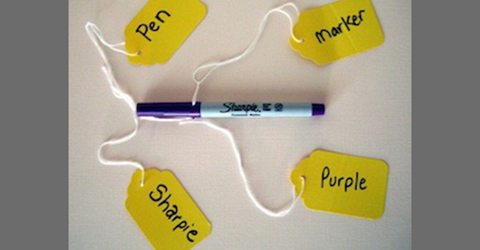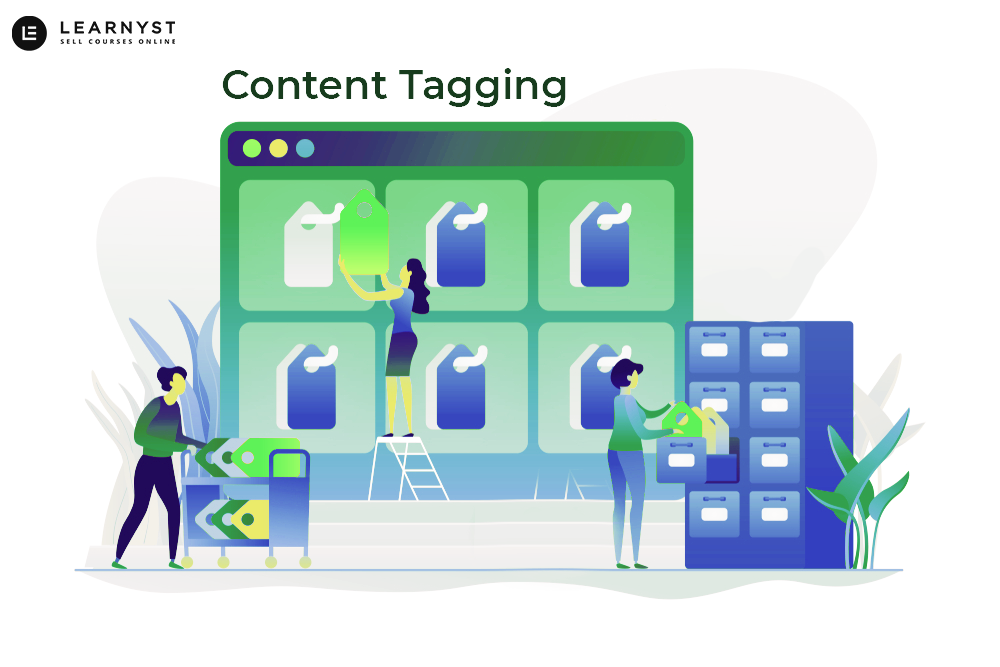Content Tagging: An Effective Marketing Tool
- January 31 2021
- Vaishak

Let us begin with a story of how content tagging helped a teacher
Rajiv, an online tutor from Bangalore, was struggling to generate income. Many of his fellow tutors were doing very well. And Rajiv had also left a high-paying job to pursue his passion for teaching. All these made him highly disappointed.
He wanted to understand where he was going wrong. After a thorough analysis, he realized that his course reached very few people as compared to his counterparts. In other words, he fell short in his marketing efforts.
He wanted a solution for this, but he had a tiny budget. That’s when he came across the power of content tagging – The art of linking your content with specific words. As expected, this helped his course reach hundreds of learners very soon and his bad days were left behind.
Like Rajiv, there are hundreds of tutors struggling to grow in an ‘always growing’ industry like e-learning. Did you know that the e-learning sector is expected to generate a market revenue of $14.33 billion between the year 2020-2024. And it is tools like content tagging that can propel this growth.
In this blog, we will see what is content tagging and how it can be effective in selling your online course.
What is Content Tagging?
The online education industry is an ocean of resources with billions of content pieces available on every subject matter, scattered across every channel known to mankind. Browsing through such a vast ocean to get a relevant topic is a daunting task.
Time-bound learners who need reference materials might find it difficult to spend several hours to get a single piece of content. To make their lives simpler, a tool was needed to organize the content and make the search as easy as possible.
This is where content tagging comes into picture. Tags or metadata are simple keywords that are used to label a file or content. Computer-based tagging stores the content pieces under the specified tags making the content easily searchable. Most Learning Management Systems support content tagging which makes your course visible to the learners. In short, content tagging serves as an effective marketing tool for your courses. A simple example of tagging is the use of hashtags on social media.
Why should you tag your content?
You need to perform content tagging not only to make the content easily searchable but also for various other reasons. The reasons are listed below.
- Serves as a reference in the future either for learning or even for authoring content
- Helps you to monetize the content through better advertising and recommendations
- Increases the association for marketing services
- Generates tag-clouds of the learner preferences and improves the course further
To summarize, it is quite evident that content tagging boosts the course’s possibilities to generate large incomes.
How to tag content?
By now, this might be a nagging doubt lingering on your mind. Remember this, you can tag content either manually or through automation. Manual tagging is the older version of this process wherein you simple assign the tags manually to the content in the LMS. You trust your judgement and your research to identify the correct tags and you embed them in your content. This is primarily useful in the case of small content or when you do not post content frequently. But when you start producing lots of content pieces, manual tagging will not help.
This is where automatic tagging helps. It uses artificial intelligence, machine learning, and content analytics to study your content and make them readable to computers. The computer reads the text and understands the topic, the sentiment of the content, people, places, and language, and finally tags the content accordingly.
How content tagging serves as a marketing tool?
Now let us address the elephant in the room. In marketing terms, tagging is an effective SEO strategy wherein the content gains more visibility to the visitors of a website and search engines. Tagging content serves helps your marketing efforts in the following ways.
Searchability
Your course might have a diverse variety of contents, but what happens when your audience did not find what they need? All your efforts in preparing such rich content goes in vain. When you tag your contents and group them into categories based on keywords, your audience can just type the keyword and get their desired material.
Analytics
A marketing campaign needs a strong analytical base that helps to rectify the loopholes in your sales program. Through tagging, you can get the complete analytics related to your audience preferences, clicks per page, time spent on a piece of content, and so on. All these data can help you tailor the course content accordingly.
Sales Booster
Tags are an excellent booster for content sales. When learners become engrossed with your content, they wish to learn more about the same topic. Adding right tags to your course can automatically redirect them to other relevant courses on the same subject in your website.
Want to know more marketing tips? Here is a quick guide for you – Marketing your online courses: Tips and Tricks
Some Content Tagging Tools
If you are using an LMS without content tagging capabilities, then here are some tools that can come in handy.
Google Tag Manager
This is one of the most widely used TMS (Tag Management Software) on this planet. The setup is quite easy and is also a free-to-use software.
Adobe Dynamic Tag Management
The next-in-line to Google is the Adobe DTM. It integrates seamlessly with Google Analytics and gives an accurate result about your course’s sales performance.
Tag Commander
Tag Commander is an enterprise-level TMS that is popular for its intuitive interface and easy-to-use features
These are some of the content tagging tools that you can use for tagging your online course content.
Content tagging support from Learnyst
Learnyst is a one of a kind LMS platform that has thousands of users across the country who create and sell their courses. Using these features, you can create courses from your own website, conduct mock tests, secure your courses, and most importantly tag your course content.
For course creators, tagging can be done from the “Tags” option on your Learnyst dashboard. Your learners will use these tags to find the courses of their choice. For instance, if you’re an online tutor who specializes in teaching for AIEEE, you can use AIEEE as a tag. You can then link all the content, articles, question banks, and assignments under this tag so that when a learner searches AIEEE, he gets access to all the links related to the topic.
Learnyst supports 4 types of tagging methods.
- Product Tagging
- Question Tagging
- Lesson Tagging
- Newsfeed Tagging
If you are not part of the Learnyst family yet, sign up with Learnyst today for a 1free trial and see how effortless the content tagging part is and how it can boost your tutoring business.


Leave your thought here